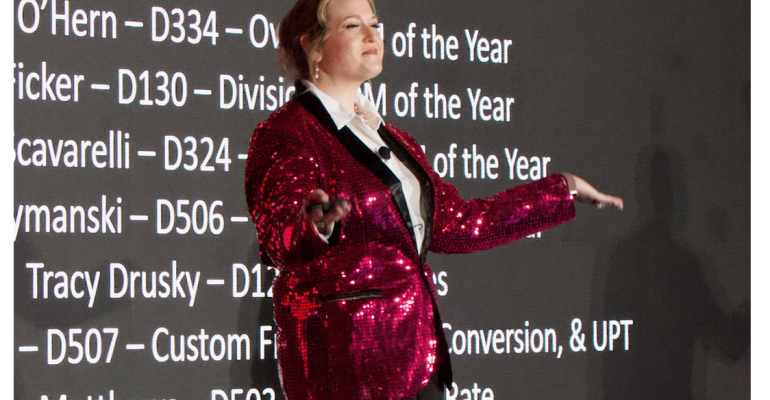When Tiffany Reese came to Michaels Stores in late 2021 as manager of store communications, she inherited responsibility for a field leadership meeting that was “essentially three days of death by PowerPoint in a ballroom,” she notes. “I thought, ‘we can’t keep doing it this way,’ but then I saw the budget and understood the limitations.”
She did not, however, accept those limitations. Engaging the merchandise buyers at stores around the country, Reese provided them with an enhanced event-sponsorship kit that went beyond offering their clients just an expo booth at the FLM. “I gave them a revenue target that I told them would help make the meeting so much better, and they came through,” she says.
From there, Reese pushed a change initiative onto Michaels’ leadership team: Better coordination of presentation content. The idea was to establish a memorable common thread for the three-day August meeting, which is critical for driving the company’s peak-season sales.
“My team started working with each executive way ahead of time to keep them aligned,” Reese notes. “We said, ‘This is the message your peers are presenting; let's make sure you’re supporting that as you give the update on your part of the business.’ Telling a cohesive story supports the agenda and feels more intentional,” thus making a strong impression on attendees.
Combined with better stage sets and production values funded by sponsor revenue, the executives’ presentations—plus a new panel discussion where they all shared personal anecdotes and leadership lessons, then answered attendee questions—would deliver far greater impact, Reese told her bosses.
Next on her list: Changing other event elements based on more granular attendee feedback. “We had some good surveys and historical data, but because I’m in contact with store managers all year long, I started to poke and prod them to see what they want out of the next meeting compared to the previous one,” she says. “Then we package those ideas, send them back out to store managers, and ask, ‘Is this the right path we’re going down for the upcoming meeting?’”
Lastly, Reese assembled a 20-person volunteer squad called Meeting Makers to assist her team of four with executing and staffing the FLM. Comprising corporate-office employees, the Meeting Makers program “has gotten kind of competitive because people see the value in spending time with our field partners and having cross-functional networking opportunities,” she says. “People ask me, ‘Can I get into Meeting Makers now?’”
With a five-percent year-over-year improvement in attendee satisfaction (helped by a 300-percent rise in sponsorship revenue and rave reviews for the executive panel discussion), the reinvigorated FLM helped Reese earn a promotion. She became director—workload, communications, and events for Michaels.
Challenges to Change
“Keeping all of our leaders on the same path with the meeting’s messaging is pretty tough. It’s like herding cats; each executive wants to drive their specific message, and each has good reasons for wanting to do that. But our CEO gives us his strategic priorities at the start of the year, and that helps me be able to say as they’re building their presentations, ‘We're kind of going off the rails here; let's bring it back.’”
Advice for Making Change
“Know who all the stakeholders are, including your cross-functional stakeholders, and bring them to your side as early as you can. Help them see the value of the event—not just for attendees but for their function within the business—and see what type of partnership would achieve their goals and the company’s goals. Once they see the value in what we're doing and understand what it does for the business, everybody comes along much more easily.”





